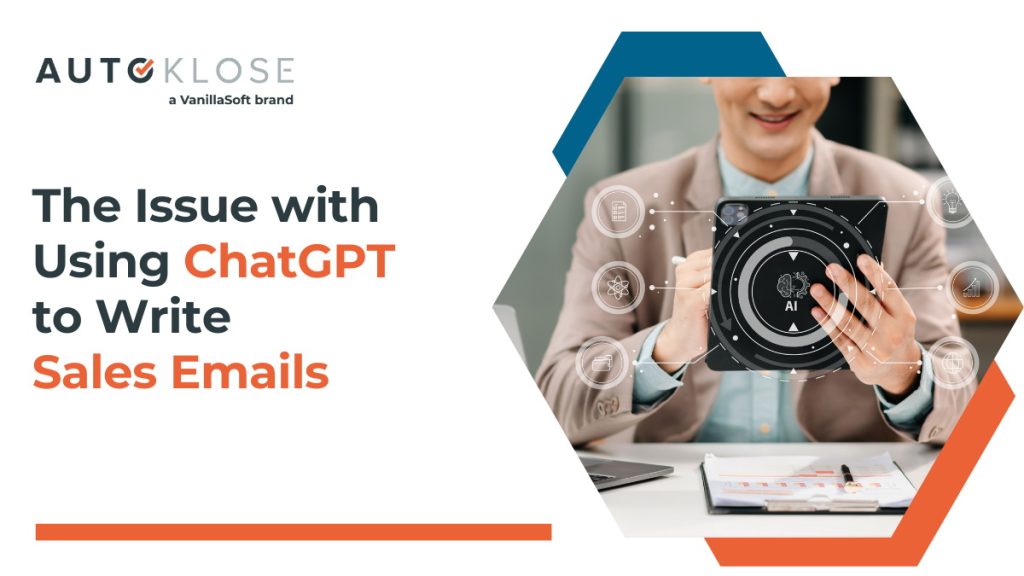
ChatGPT made a huge splash in November 2022 when it was publicly released with its capability to have human-like dialogues with users while answering their questions.
It was soon clear that the powerful language-processing model had another superpower — it allowed users to effortlessly generate all kinds of content, including blog posts, guides, white papers, ebooks, emails, you name it.
Trained on massive amounts of data, this chatbot very quickly found its place in every marketer’s tech stack, as it helped them automate their tasks and speed up lots of content creation processes.
It’s only logical that salespeople also embraced ChatGPT to help them craft sales emails, something that’s usually their responsibility, although it requires a significant amount of time and creative effort. While it’s true that sales professionals can write perfectly good and effective emails, this activity eats into their workday, detracting from their primary focus of building relationships with potential customers and closing deals.
But, is it safe to rely on ChatGPT for creating your email campaigns? Let’s talk about some issues you will encounter.
1. Lack of Contextual Understanding
One of the primary limitations of ChatGPT is its inability to fully grasp and incorporate the specific context of a sales situation.
While it can generate responses based on the data it has been trained on, it lacks the ability to understand nuanced client relationships or the specific history of interactions.
This means that ChatGPT can produce emails that, while grammatically correct, may miss the mark in terms of tone or relevance.
For example, it may use a tone that’s too formal or informal, thus failing to match the recipient’s expectations or preferences. Another problem that frequently occurs is that the chatbot generates too elaborate messages, even though it’s instructed to provide a succinct output.
Generally speaking, this lack of context will make your emails sound too robotic or tone-deaf. Therefore, you won’t be able to build rapport and establish a meaningful relationship with the recipient.
Having said that, it is possible to fine-tune ChatGPT and offer it some additional context about the purpose of your email, the nature of your relationship with the recipient, or the kind of message you want to convey. The paid version allows users to add custom instructions in the settings section. The trouble is that it’s fairly unstructured, so users are left to their own devices as to what to include and the level of detail they should provide.
2. Inability to Adapt to Specific Customer Profiles
Just like that’s the case with the contextual understanding, ChatGPT falls flat when it comes to adjusting emails tailored to individual customers or different audience segments. Although the chatbot is undeniably effective when it comes to producing neutral content, it leaves much to desire if you want it to create sales email copy with a personal touch. To improve customer service and reduce response time, many businesses are exploring the benefits of chatbots in handling customer inquiries.
Customers expect messages that acknowledge their unique needs and preferences, as well as reflect their previous communication with the company. Since ChatGPT operates on generalized data, it can’t inherently provide such a level of personalization.
As a result, the inability to reference past interactions or tailor messages based on individual customer profiles will make the emails it generates come across as generic and impersonal. And no matter how seemingly well-structured and linguistically accurate those emails are, customers won’t find them relevant or engaging. Needless to say, outreach that doesn’t resonate with your recipients doesn’t stand a chance of converting into customers.
As we have already illustrated, it’s possible to provide some background information that would infuse ChatGPT-generated emails with relevant details about the prospect and their situations but this would bring us back to the previous point and salesperson’s prompt-engineering prowess.
3. Prompt Engineering Can Be Difficult and Time-Consuming
Not everyone is adept at “prompt engineering” — the skill of crafting effective prompts to elicit the desired response from an AI tool like ChatGPT. Let’s not forget that we’re talking about a machine and that it requires a specific input format, structure, and vocabulary to understand and generate natural language.
To be able to achieve this, sales reps would have to understand the model’s behavior, capabilities, and limitations and tweak the input to guide its responses.
Given that all this isn’t their area of expertise, sales reps may struggle to phrase their requests in a way that would generate the most effective and appropriate email copy. This skill gap can lead to subpar email drafts that require significant human revision to be useful. It adds up, making the entire process complex and time-consuming.
Let’s unpack what happens when you actually decide to make the most of the ChatGPT custom instructions that go beyond using just the standard user interface.
The image below shows the screen you’ll see, and there are some talking points that should help you provide relevant feedback. The system suggests answering some of the following questions: Where are you based? What do you do for work? What subjects could you talk about for hours? How long or short responses should generally be? How formal or casual should ChatGPT be?
Still, it can be difficult to decide what to talk about in these two fields and what kind of language you should use — should you be descriptive or use imperative mode? Is there a particular flow, or you can simply use bullet points? That’s something over what an average ChatGPT will most likely scratch their head.
Additionally, in some cases, even though you state you’d like the copy to be short, the chatbot doesn’t follow the instructions closely, and you end up with a verbose message you should rephrase and restructure.
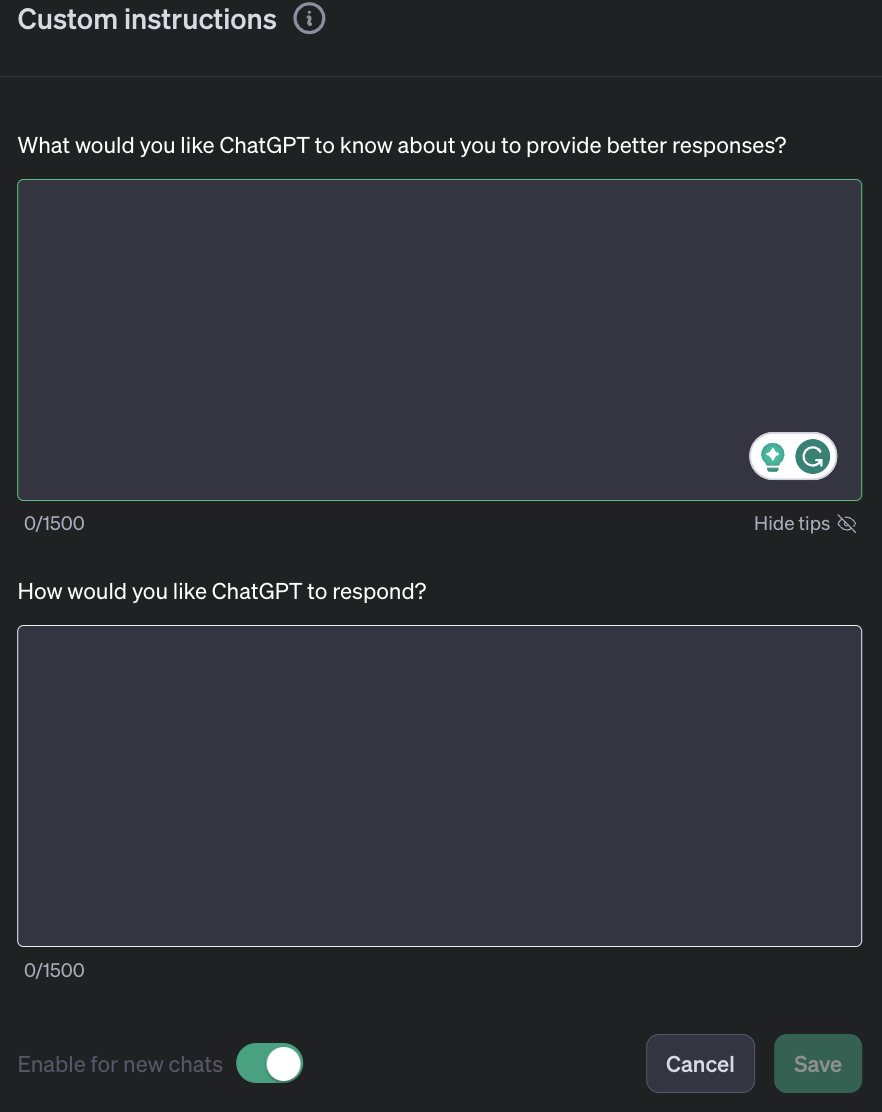
After all this, it’s safe to conclude that ChatGPT hasn’t been designed specifically for composing emails.
However, you’ve probably noticed that there’s a Beta feature inviting you to create your own custom ChatGPT for a specific purpose.
So, is it possible to make your version more email-friendly?
In theory, yes. You can indeed configure the settings and gear your custom ChatGPT toward writing emails that match your tone, style, and goals.
But again, to be able to do that, you need to learn to speak the machine language first, which implies studying numerous resources and fine-tuning your prompts, something that’s equally challenging and time-consuming as crafting your own copy from scratch.
As you can see from the following screens, it’s not exactly something that an average person could do easily.
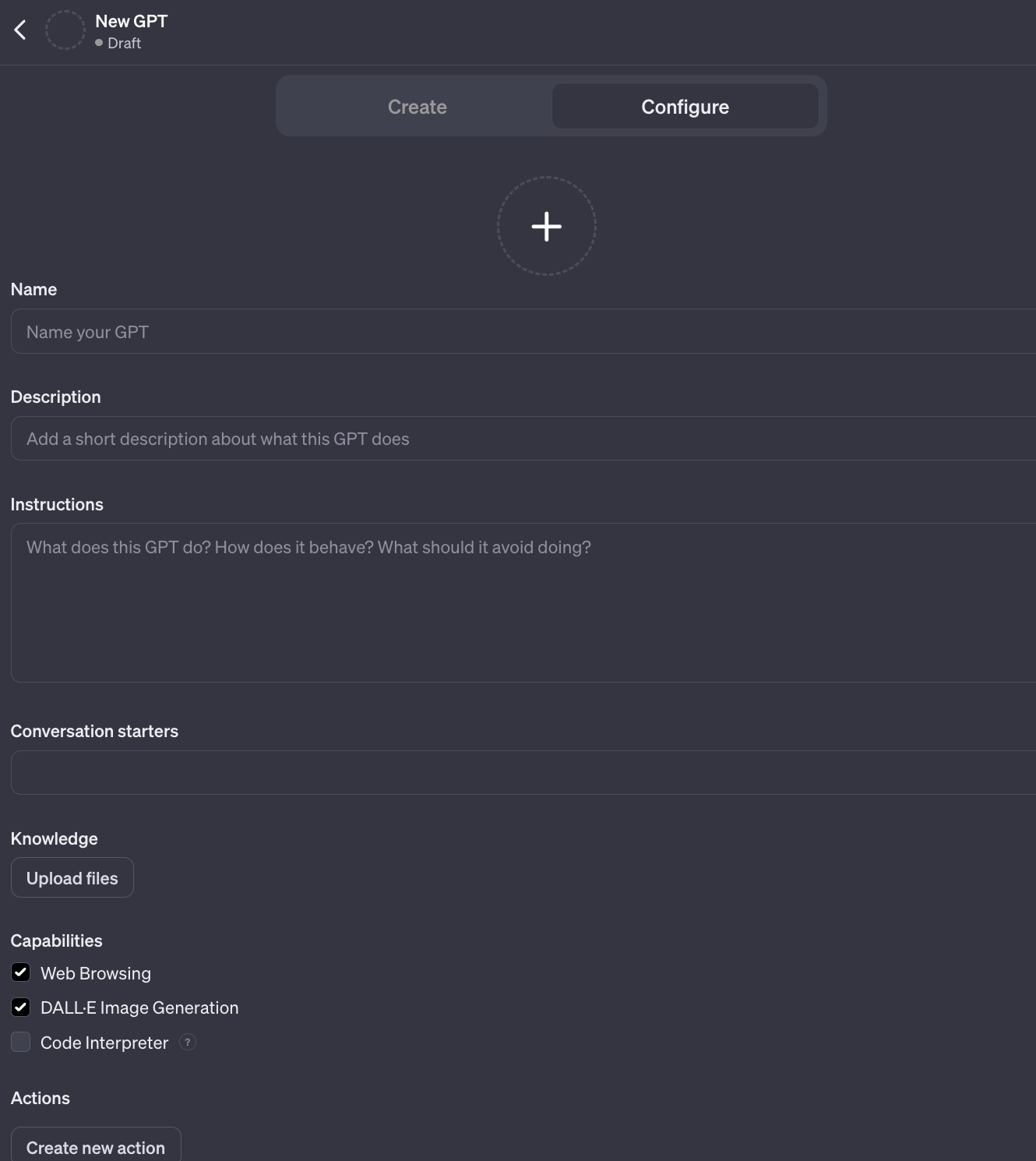
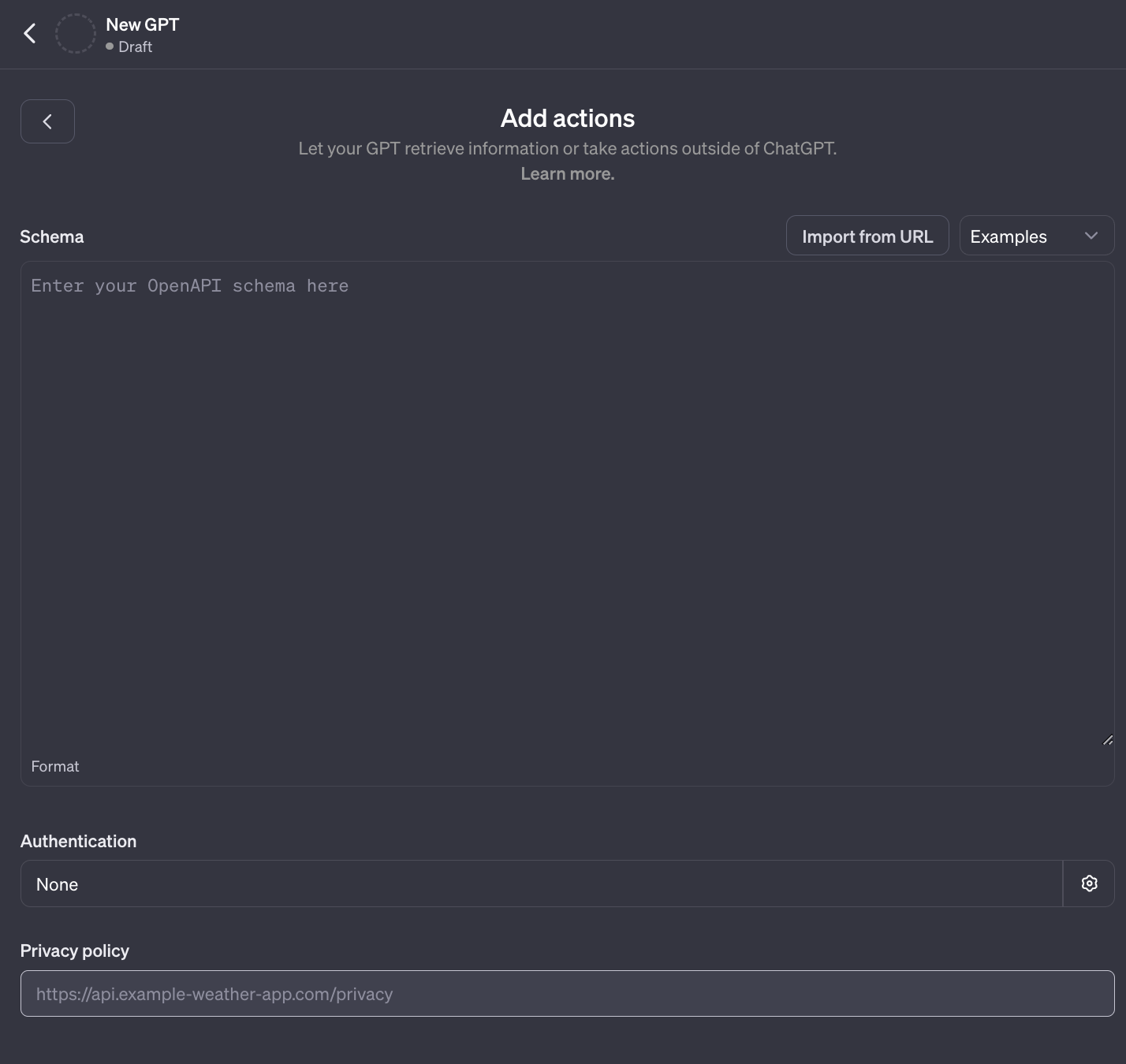
4. Hard to Get the Right Brand Tone of Voice
Another challenge of using ChatGPT for sales emails is that it may not capture the right brand tone of voice for your business, that is, convey your brand personality, values, and message to your audience through your choice of words, style, and attitude. This helps you distinguish yourself from the competition as well as build trust and loyalty with your audience.
Due to all the factors we already discussed, ChatGPT is not designed to reflect your specific brand tone of voice. It is based on a generic data set that may not match your industry, niche, or target market. For that reason, you risk using inconsistent or inappropriate tones for different types of emails, such as promotional, transactional, or informational.
For example, a humorous tone may work well for a marketing email but not for an order confirmation email. Similarly, an informal or too conversational tone isn’t suitable if you’re targeting enterprise customers.
To get the right brand tone of voice for your sales emails, you need to define your brand personality, core values, and the message you want to communicate and then translate them into specific language guidelines that you can apply to your email copy.
You also need to align all this with your audience, their preferences, and their expectations, and tailor your tone accordingly. For example, for a younger and more casual audience, you may use a friendly tone and include memes, gifs, or slang, but if your audience is older and more professional, such email copy would be considered a faux pas.
Getting ChatGPT to follow these subtle cues and differences requires a lot of manual input, customization, and incorporating more personalization variables and feedback mechanisms, which automatically makes using it more complicated.
How Can Autoklose Composer Help?
Autoklose Komposer is an AI-powered tool for crafting targeted, personalized sales emails. Unlike ChatGPT, Komposer has been designed with email copy in mind.
We analyzed all the issues salespeople have when using ChatGPT to streamline their email campaigns and tried to make the entire process much more user-friendly.
Komposer’s user interface is more intuitive and leaves no room for confusion and irrelevant details. It will guide you through the email creation process and allow you to provide the context, define the purpose, select the tone of voice, and even incorporate your brand guidelines, making sure that the emails you get are personalized and suitable for individual recipients and audience segments.
Unlike ChatGPT, Komposer helps you navigate through all the fields you have to fill out, making the entire process quick and effortless.
You’ll get three different versions of the same email, together with subject lines, and you can additionally tweak it to be as personalized as possible. Plus, you can save different contexts so that you can simply activate it with one click whenever you want, which will save you a lot of time.
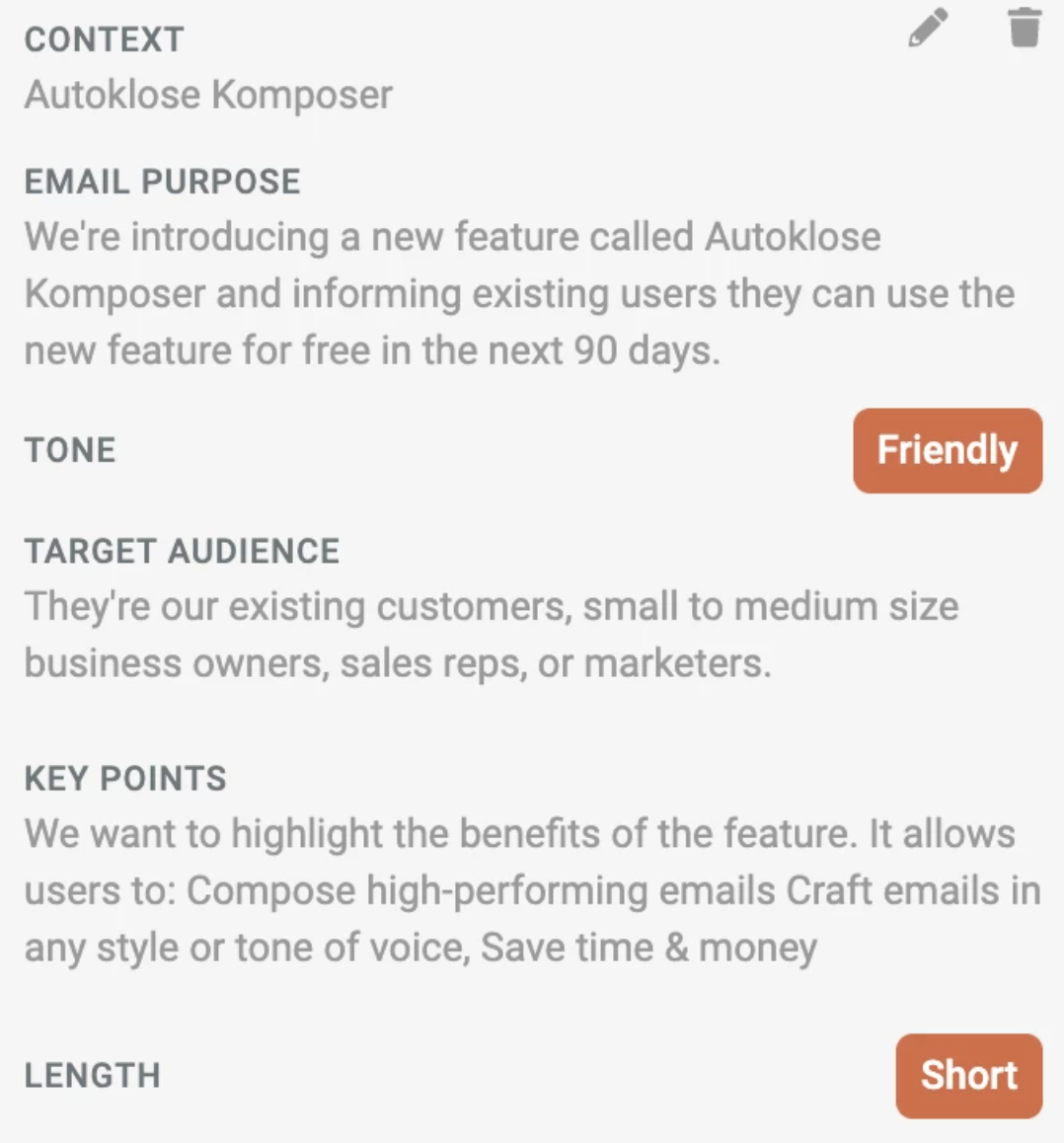
Once you predefine the context, which includes your brand guidelines, you can choose among templates for different business purposes, pick the tone, and define the length of your message. Our placeholders indicate what information to include and summarize the key points you want to discuss in your email.
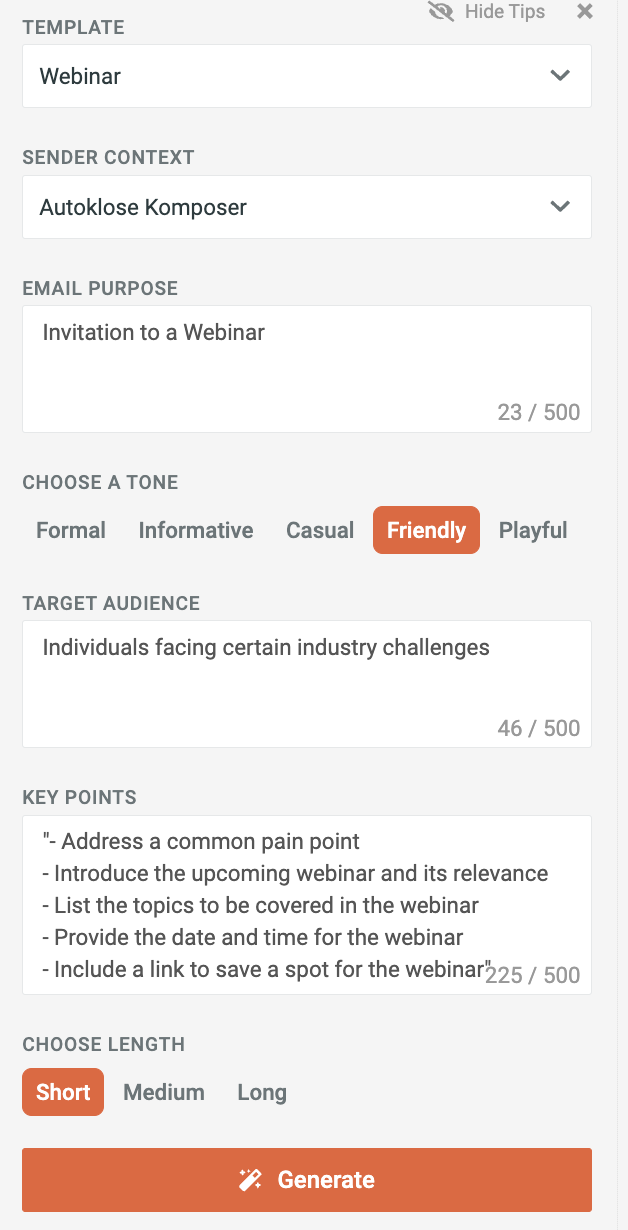
In short, Autoklose Komposer refines the generalized ChatGPT’s output by taking the context and customer profiles into account. There’s also no need to be proficient in the machine language and understand how prompt engineering works.


